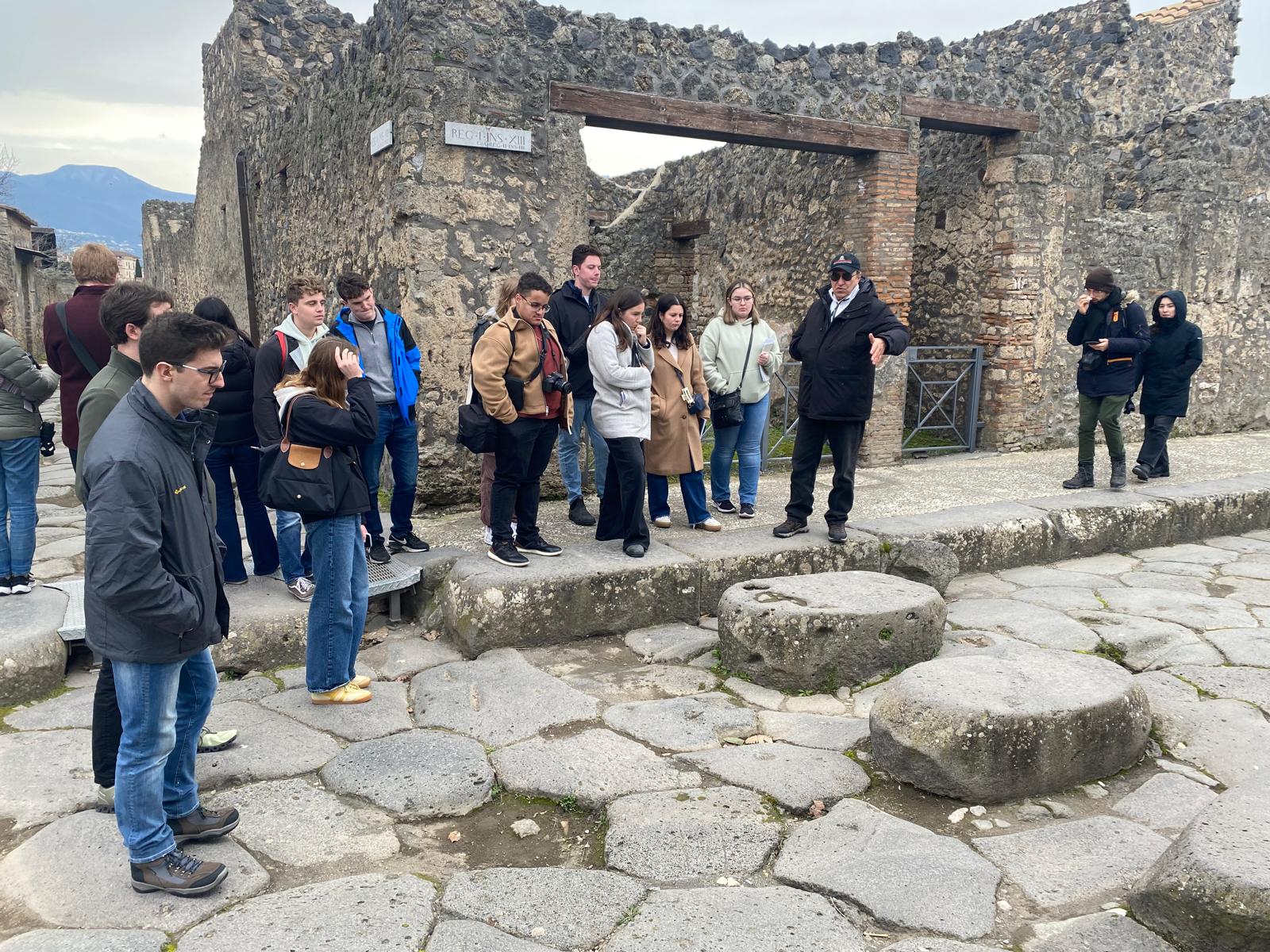
Students onsite in Pompeii learning about ancient roadways. January 2025.
At Pantheon Institute, academic field trips are an integral facet of our commitment to experiential learning. The act of visiting and exploring a location, be it the archeological ruins of Pompeii, the Renaissance design of the Santa Croce Church and Pazzi Chapel of Florence, the medieval Veronese Castelvecchio renovated by proclaimed architect Carlo Scarpa, or the Ex Saffa Community Housing Project built amid the winding canals of Venice, provides an invaluable hands-on learning experience that deepens students’ understanding of the architectural and urban design principles taught in our Design Studio, Architectural Analysis, and Cartography courses.
Guided by our expert professors Romolo Martemucci and Lavinia Nannini, students observe firsthand how historical design elements, construction techniques, and spatial organization have influenced both historical and contemporary architecture and urban planning. Pantheon Institute President and Professor Romolo Martemucci explains, “Drawings are assigned that make the difference between architecture and the urban design of different places evident, manifest, and analyzed so as to understand the meaning that is represented in the different architectural and urban forms that exists in places like Rome, Florence, Venice, Paestum, Pompeii, and Herculaneum”. Onsite lectures offer context and insights that enrich these field trips, helping students connect theoretical knowledge with real-world examples. These field trips encourage critical thinking as students engage with the material, ask questions, and analyze how politics, religions, scientific innovation, language, and cultural values have shaped and reshaped architecture and urban landscapes over thousands of years.
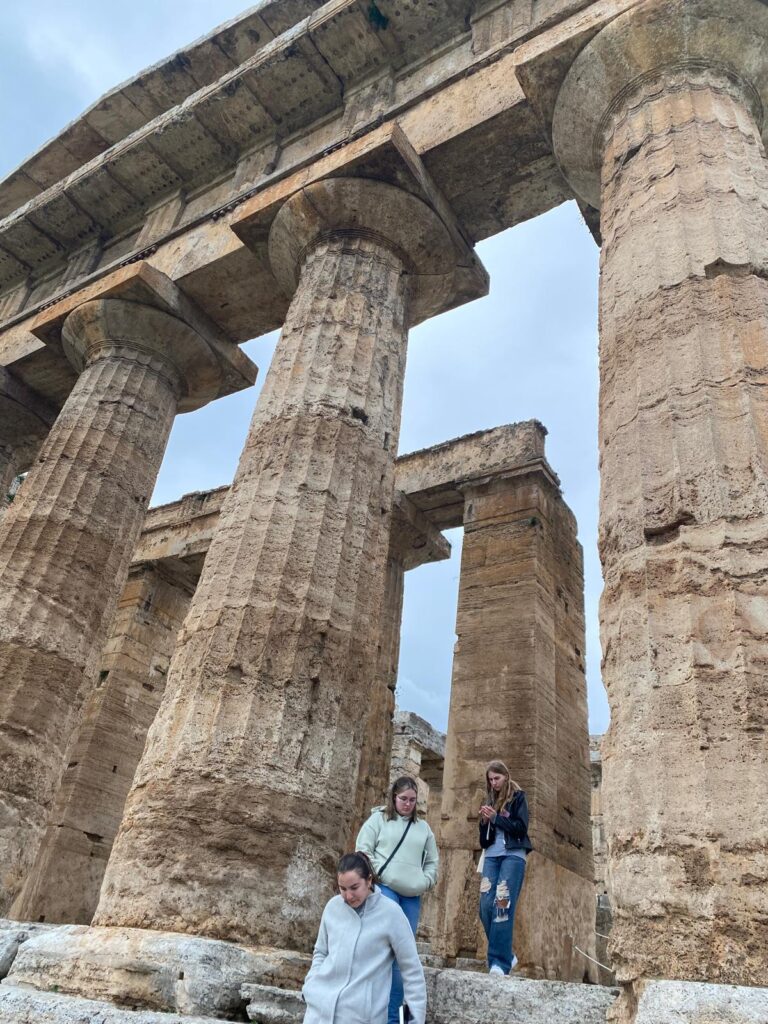
Students exploring the ancient Greek temples dedicated to Hera, Neptune and Athena at Paestum, January 2025.
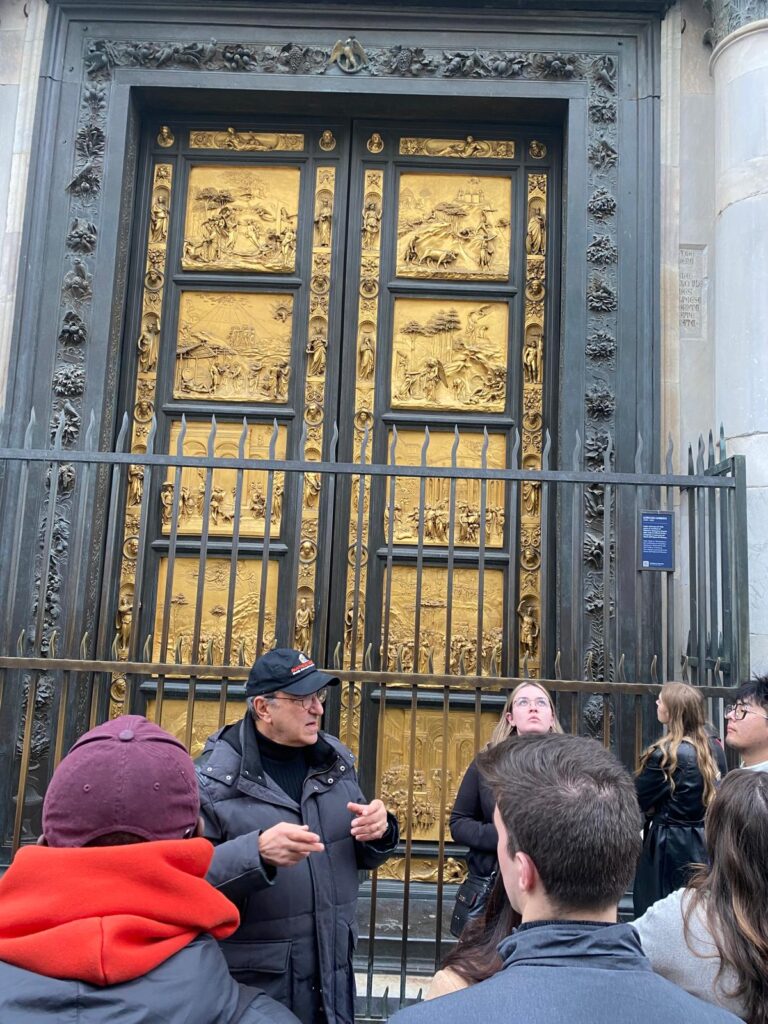
Professor Romolo Martemucci lecturing onsite in Florence at the Baptistry in front of the Gates of Paradise by Lorenzo Ghiberti (1452). January 2025.
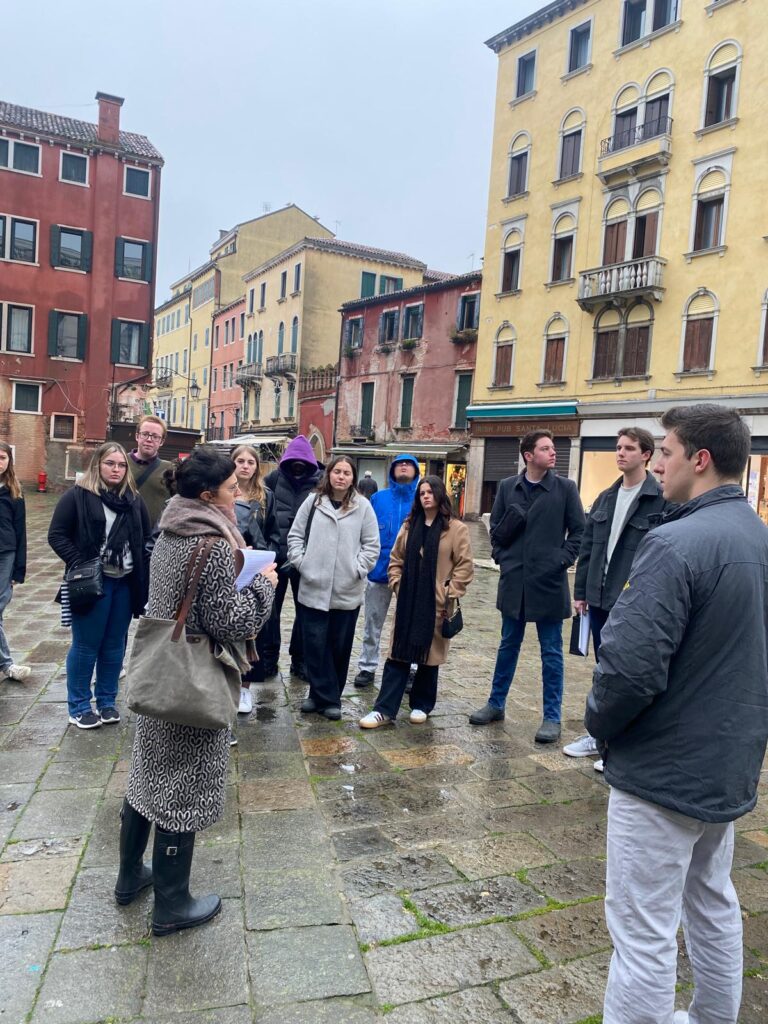
Professor Lavinia Nannini lecturing onsite in Venice in Campo San Geremia. January 2025.
“Given the very unique situation that Italy presents, with individually developed cultures, both artistic and architectural, in different areas in Italy … the administrative organization, the political and social orders of these different (Italian) principalities or Republics, are manifest and therefore can be analyzed by a re-presentation of their architecture”. Pantheon Institute President, Romolo Martemucci.
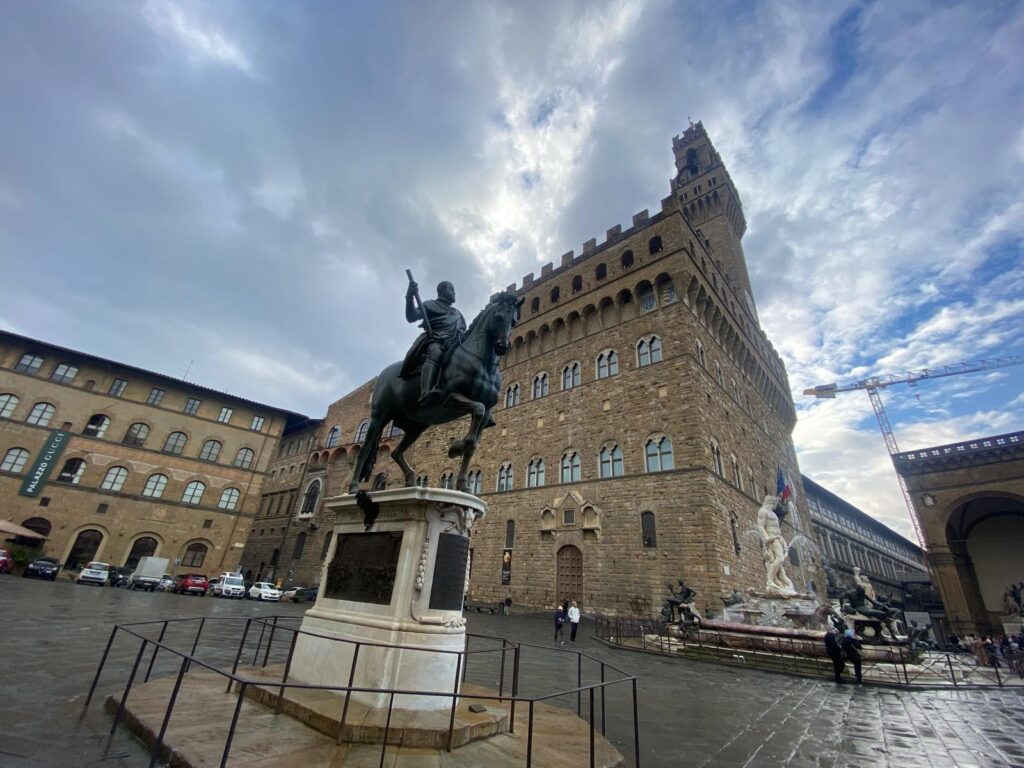
Florence’s City Hall in Piazza della Signoria featuring a bronze statue of Cosimo I de’ Medici Fountain of Neptune.
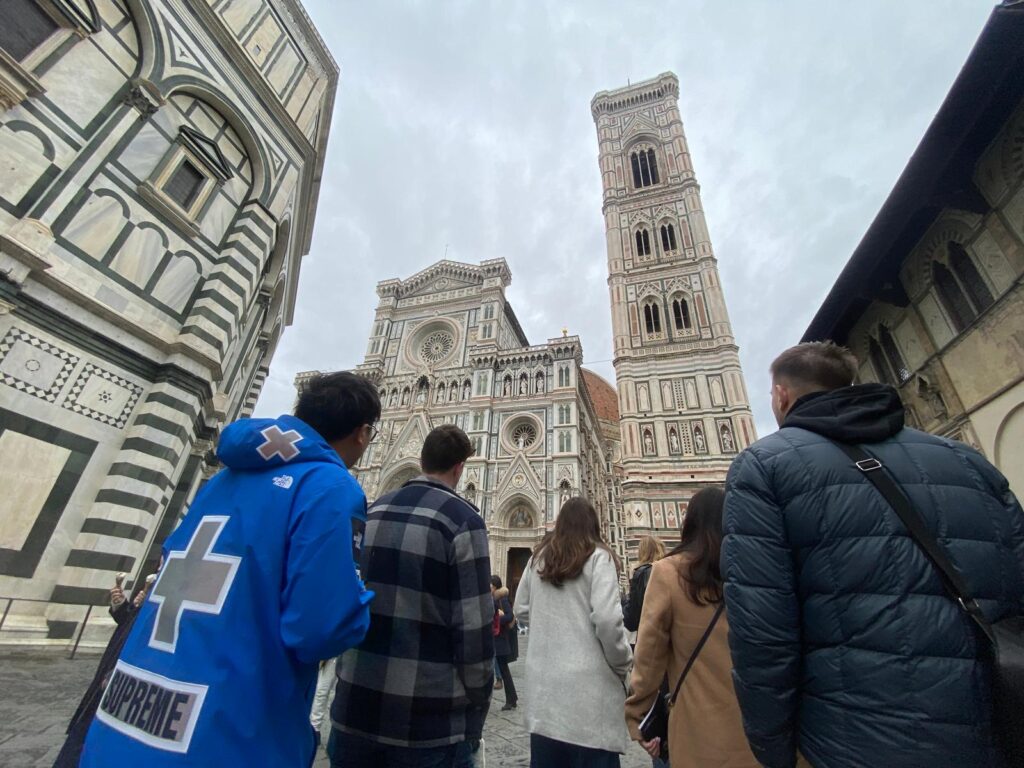
Visiting Florence’s Duomo, bell tower, and baptistry. January 2025.
Over a 7-day period, students are able to see a through line of design and engineering connecting the regions of the Italian peninsula. The immersive nature of learning directly from the built environment fosters a deeper appreciation of architectural form, function, and history, allowing students to integrate these lessons into their own design work. Professor Lavinia Nannini hopes students learn about, “architecture and the history of architecture and how a different culture and a different geography helps us shape space“.
A key theme of the Field Trips is how spaces and buildings transform overtime, adapting to the needs, styles, capabilities, and values of the cultures using and reusing those spaces. Not only is the repurposing of a landmark or historic building an issue of sustainability, the symbolic nature of these spaces speaks to how cultural identity is rooted in shared historic understanding. Professor Martemucci describes the daily ritual of traversing, inhabiting, and transforming these shared spaces over the millennia as, “dancing with your ancestors“.
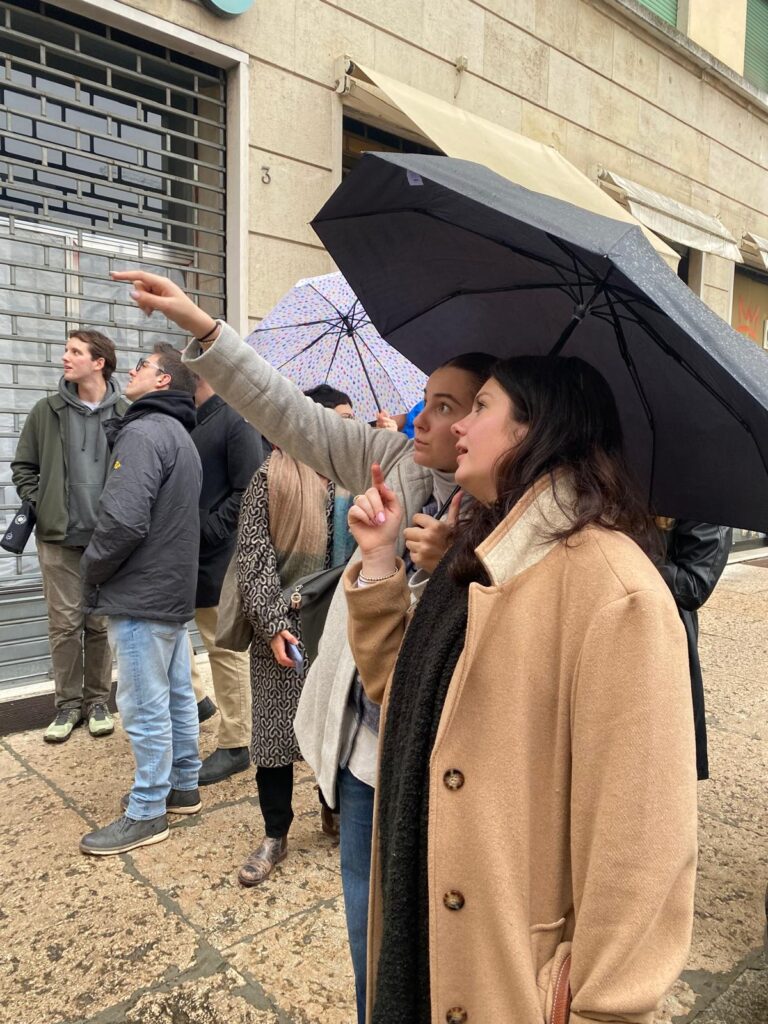
Penn State University students Natasha Meyer (left) and Julia LoManto (right) discussing the details of a building facade designed by Carlo Scarpa in Verona. January 2025.
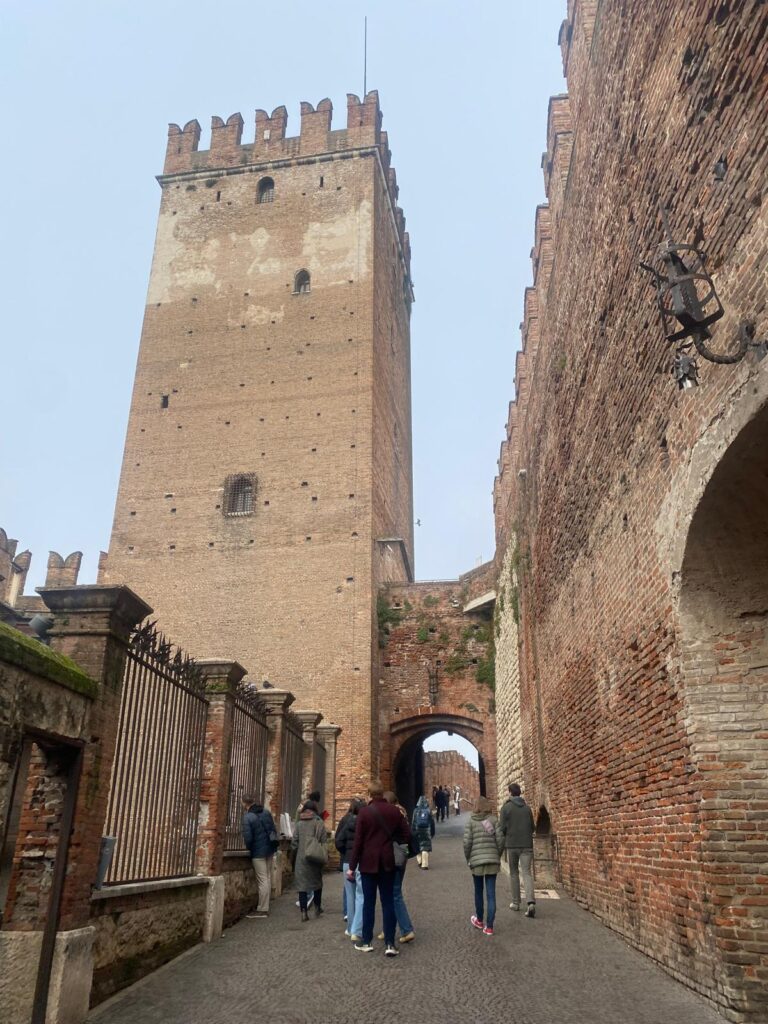
Students touring the Medieval Castelvecchio, rennovated by Carlo Scarpa in the 1960s. January 2025.
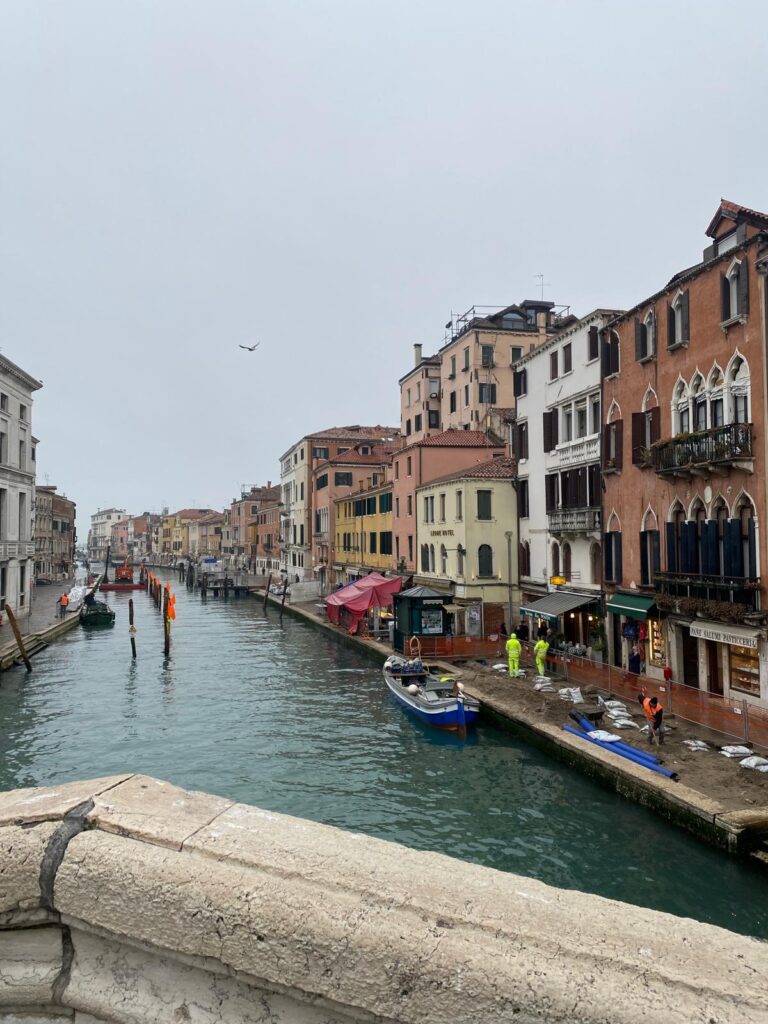
Traversing the Venetian canals. January 2025.
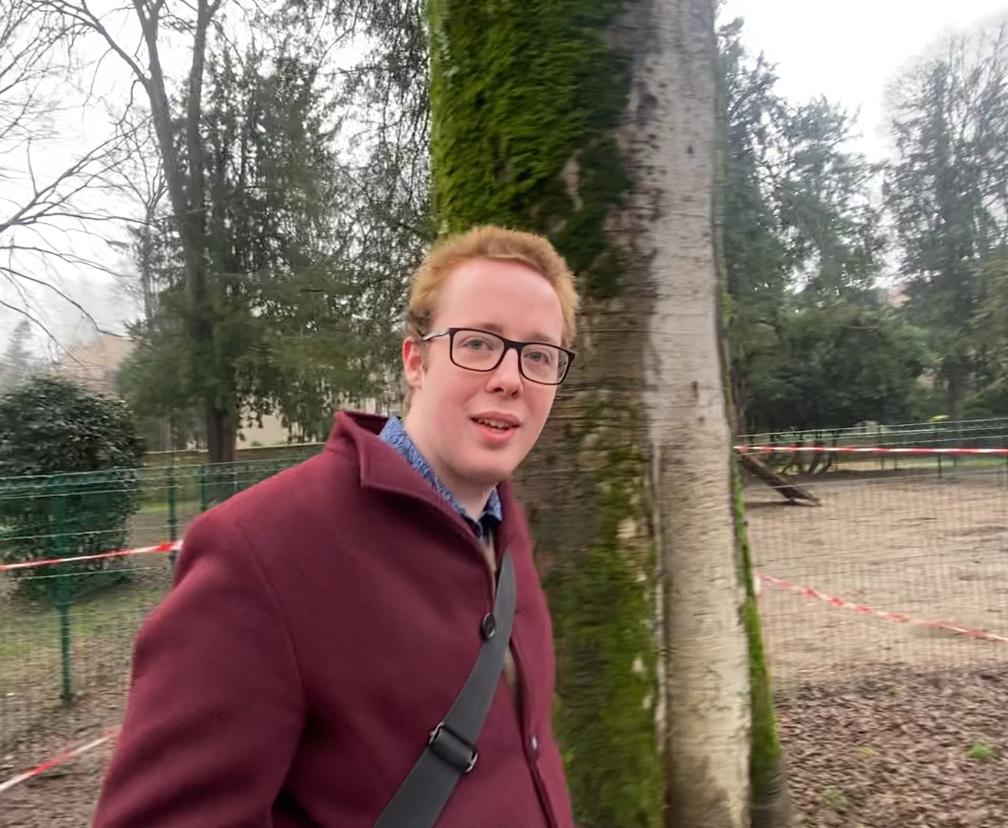
“You see this connection, even if it’s all Italian, it’s not necessarily just Italian. You have all these different cultures that really integrate together.” Isaac Merwin, Connecticut College, Spring 2025.
“Urban planning is a big focus. Every single city is different. It’s really cool to see it all within one country. You’re never going to find one thing that’s the same.” Jeremy Lynn, Penn State College, Spring 2025.
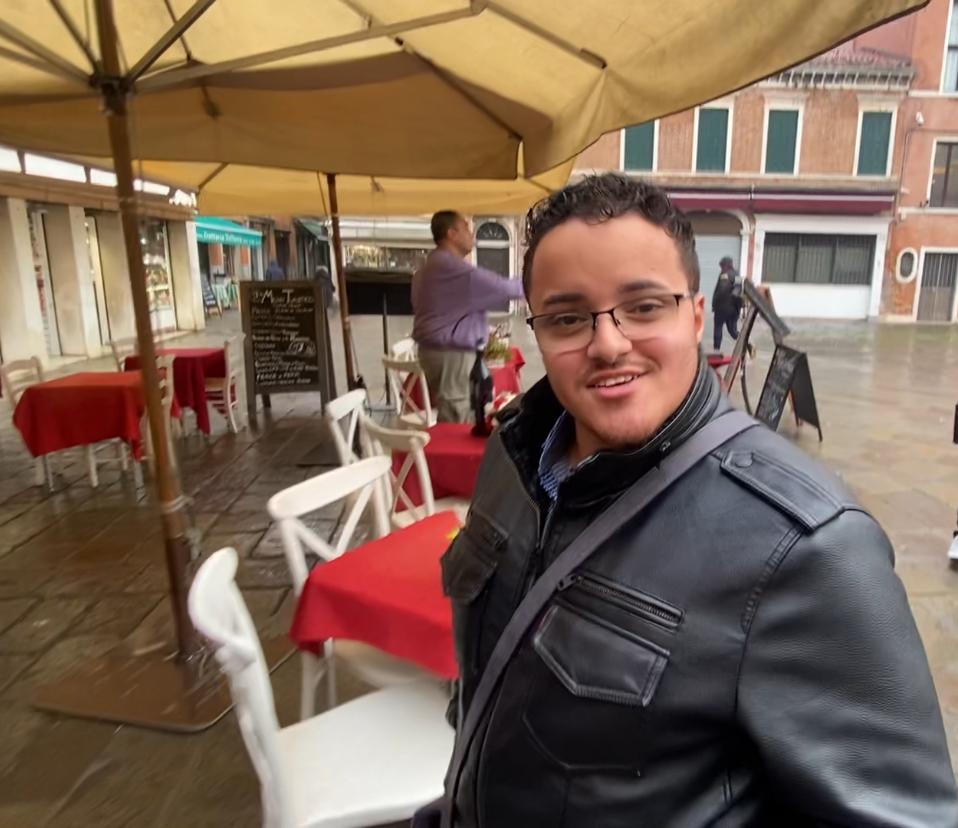

Students touring the Ex Saffa. January 2025.
Starting in the ancient ruins of Pompeii, our Academic Field Trips finish in Venice with a visit to the Ex Saffa, a unique public housing project in the Cannaregio neighborhood on the historic Venetian lagoon. A wonderful example of repurposing of existent structures and urban design, the Ex Saffa was commissioned in the 1980s specifically to support the local community and retain working-class residents in the historic city center.
As part of our complete Semester programming and our commitment to experiential learning, the Academic Field Trip schedule is complemented by additional site visits and day trips in and around Rome, including the Roman Forum, the Pantheon, Ostia Antica, Villa Adriana, and so much more.
Watch the full video (above) to see additional content of students traveling through Italy and how it impacts their studies while abroad with the Pantheon Institute.


